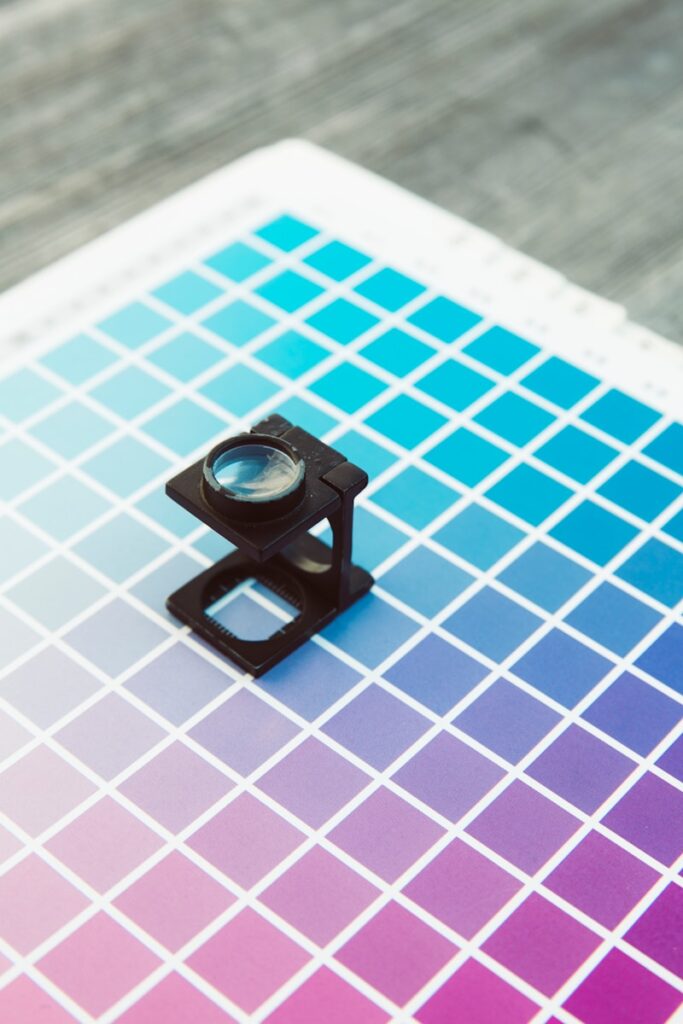The art of graphic composition, where the mastering grids in graphic design plays a pivotal role, is crucial for any designer aspiring to excellence. Grids, far more than mere structuring tools, are the invisible skeleton that breathes life and balance into your creations. This article guides you through advanced techniques and practical tips for refining your use of grids in your graphic projects. Adopt a methodical approach, enriched by concrete examples, to sharpen your critical eye and improve your ability to create harmonious, dynamic layouts. Explore with us the subtleties of this essential design element, and elevate your work to make your mark on the graphics industry.
The Basics of Grids
The grid concept is based on the creation of a basic structure that divides the design space into manageable segments. This structure enables graphic designers to organize content in a logical way, facilitating visual navigation through different components of a composition. There are various types of grid, and each can be adapted to the specific needs of a project. The most commonly used are modular, columnar and hierarchical grids, each of which brings its own advantages and can be creatively combined for sophisticated results.
Modular Grids
Modular grids are made up of repetitions of identical units in a grid format, offering exceptional flexibility for content layout. They are particularly effective for complex designs requiring a high level of consistency and detail.
Column grilles
Column grids are based on vertical strips in which content can be fluid or fixed. They are ideal for editorial layouts, such as magazines or newspapers, where reading flow is essential.
Hierarchical grids
Hierarchical grids are based on the relative importance of content, assigning more space to elements requiring additional attention. This approach highlights key points and guides the viewer's eye through a clear visual hierarchy.
By mastering these different types of grids, graphic designers can not only enrich the aesthetic quality of their creations, but also enhance the user experience by making information more accessible and digestible. It's a skill that testifies to a deep understanding of the principles of graphic design, and contributes to the communicative effectiveness of visual projects.
Visual Coherence: an Imperative
The implementation of grids in graphic design establishes an unrivalled visual cohesion. Designers who judiciously exploit grids project a mastery of their craft and a respect for their audiences, ensuring that each element is intentionally placed and contributes to a coherent whole. This creative discipline is the cornerstone of visual identity and promotes brand recognition.
Facilitating Reactive Design
The use of grids is fundamental to the design of user interfaces that need to be fluid and responsive. Flexible grid systems accelerate the process of adaptive design, where content adjusts harmoniously to different screen sizes, from connected watches to large-format displays.
Optimizing the User Experience
Grids are strategic tools for optimizing the user experience. By structuring information in a clear and intuitive way, they guide users through interfaces, simplifying navigation and accelerating content comprehension. This is an undeniable asset for brands seeking to build customer loyalty in an increasingly competitive digital world.
By recognizing and putting into practice the benefits of grids, graphic designers affirm their role as skilled visual communicators and their ability to shape enriching, memorable experiences for the user.
"Brush up on colors and their associated emotions to make sure you nail the mood and tone of your brand."
The Strategic Importance of Grids
Experts agree that mastering grids is more than a skill, it's a visual communication strategy. They remind us that good design is not just about aesthetic beauty, but also encompasses efficiency and functionality. Grids provide the framework needed to meet these challenges brilliantly.
Focus on Creative Flexibility
A thorough understanding of grids gives designers the freedom to break with convention without losing sight of clarity and organization. Modular grids, for example, can be re-imagined or de-structured, allowing creative exploration while maintaining a solid underlying structure.
Improving Visual Communication
Grids help create powerful visual hierarchies that draw attention to important elements, enhancing overall design communication. They help convey the brand message in a more impactful way, ensuring that essential information is immediately identifiable.
Promoting Innovation in Design
Grids are not an end in themselves, but a means to innovation. They are often the basis on which new artistic movements and design trends can emerge, proving that functionality does not exclude creativity but can, in fact, be its driving force.
Expert advice in this field is not to be taken lightly. Their experience and skill in manipulating grids denote a keen understanding of the many facets of graphic design. By integrating these practices, designers guarantee creations that stand the test of time and embody the convergence of art and practical functionality.
Practical Tips for Grid-Based Design
Grid-based design is a proven method for creating designs that are both orderly and visually appealing. Here are some practical tips for designers aspiring to master the use of grids in their graphic projects:
- Start with a StudyBefore diving into design, take the time to study different types of grids and how they've been used in similar projects. This can inspire your approach and broaden your understanding of the possibilities.
- Define the Project ObjectiveEvery project has its own particularities and objectives. Determine the objective of your design to choose the most appropriate grid, whether it's to improve readability, navigation or overall aesthetics.
- Playing with DimensionsDon't limit yourself to standard dimensions. Experiment with different unit and inter-column sizes to find the perfect balance that will serve your content best.
- Adopting FlexibilityAlthough grids provide a framework, they shouldn't get in the way of your creativity. Don't be afraid to modify or go beyond them to serve the unique purpose of your project.
- Testing on different mediaIn the digital age, your design is likely to be seen on a variety of devices. Make sure your grid and design remain effective on different screen formats, from smartphones to large screens.
- Requesting ReturnsPerspective can be a great help in refining a design. Feel free to share your sketches with other designers or team members to get their feedback and suggestions for improvement.
By incorporating these practical tips into your design process, grids will become invaluable allies in creating cohesive, functional and aesthetically pleasing designs. Mastering grids is an invaluable skill, opening the door to an infinite number of creative and innovative opportunities.
Lifting the veil on grid control in Graphic Design
Integrating mastering grids in graphic design can radically transform your work. These invisible structures act like a compass in the complex world of design, allowing you to navigate your creations with confidence and precision.
Grids provide a solid foundation for structuring your ideas and communicating your messages clearly and effectively, whether in digital or print projects. By mastering the principles of grids, you'll be ready to produce designs that attract and retain lasting attention. Apply these proven practices and join the ranks of designers who favor the best techniques in the industry.










